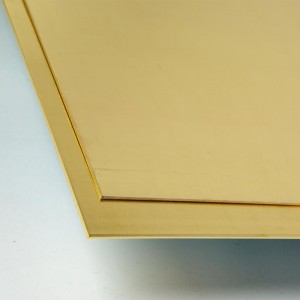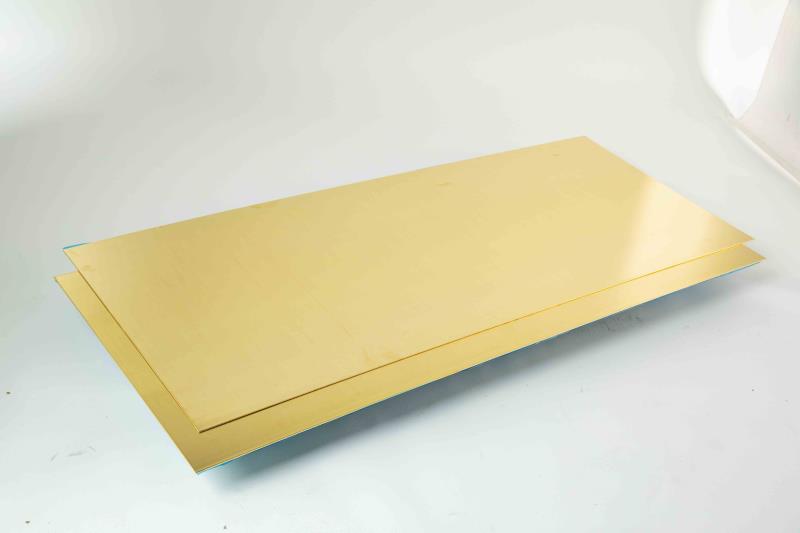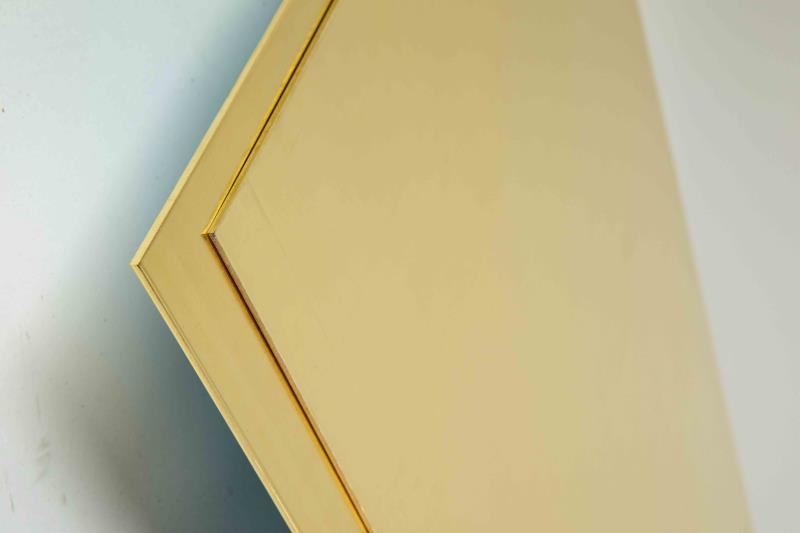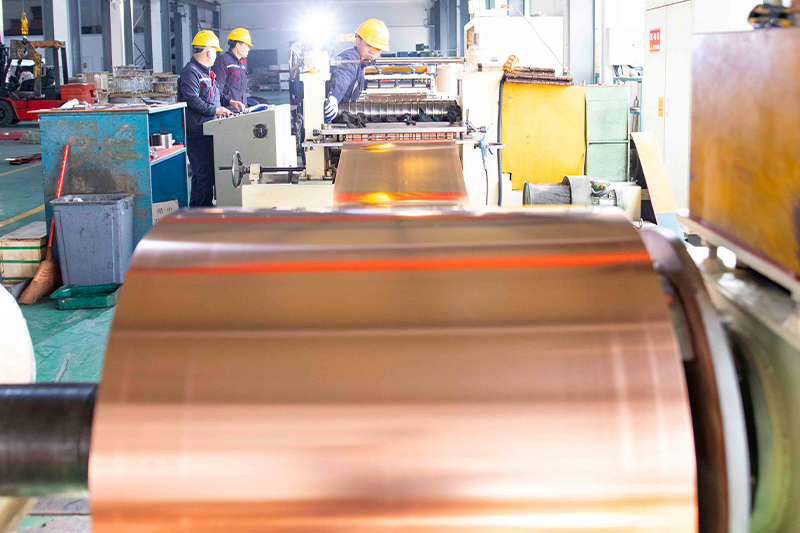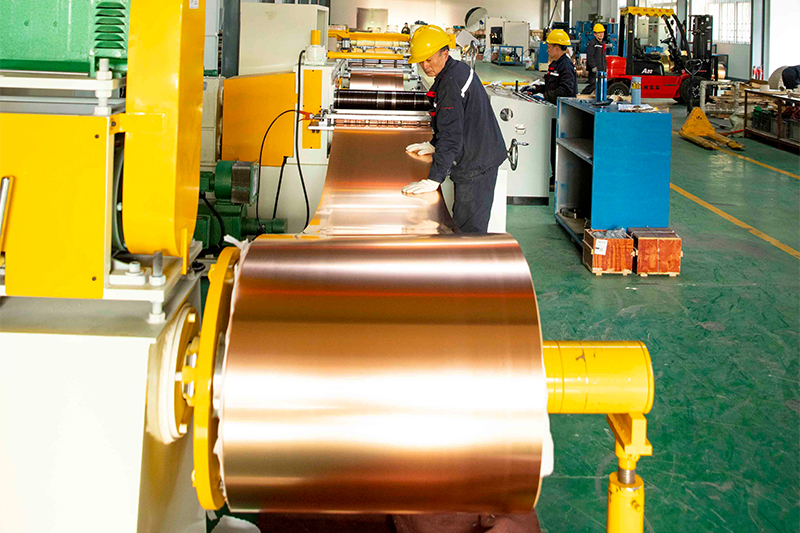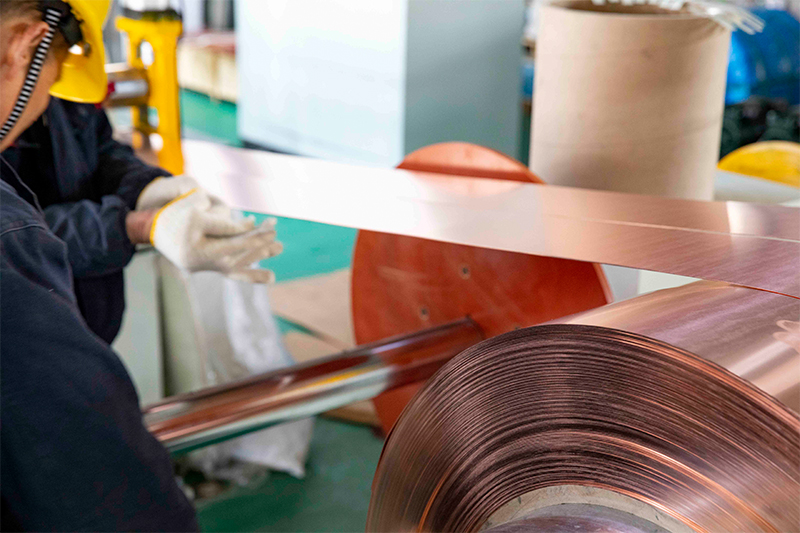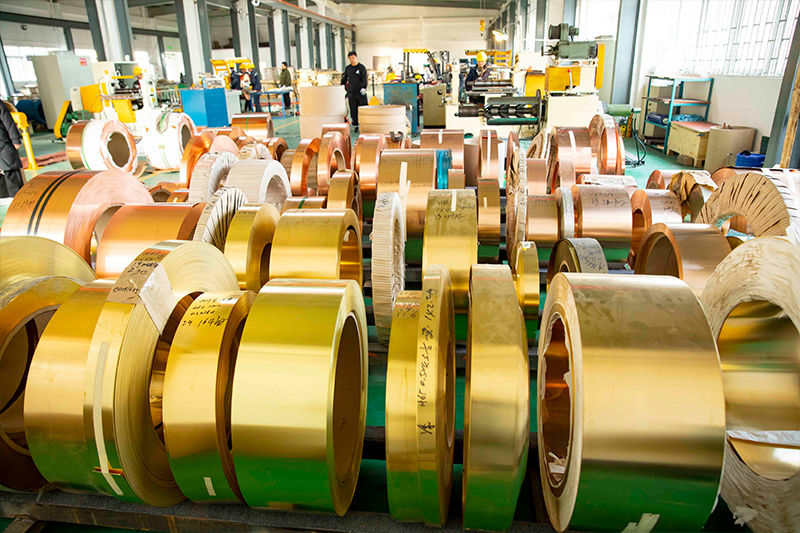| Alloy Grade | Temper | Tensile strength (N/mm²) | Elongation % | Hardness | Conductivity | |||||||||||||||
| H95 | C2100 | C21000 | CUZn5 | M | O | M20 | R230/H045 | ≥215 | ≥205 | 220-290 | 230-280 | ≥30 | ≥33 | ≥36 | 45-75 | |||||
| 1/4H | H01 | R270/H075 | 225-305 | 255-305 | 270-350 | ≥23 | ≥12 | 34-51 | 75-110 | |||||||||||
| Y | H | H04 | R340/H110 | ≥320 | ≥305 | 345-405 | ≥340 | ≥3 | ≥4 | 57-62 | ≥110 | |||||||||
| H90 | C2200 | C22000 | CUZn10 | M | O | M20 | R240/H050 | ≥245 | ≥225 | 230-295 | 240-290 | ≥35 | ≥35 | ≥36 | 50-80 | |||||
| Y2 | 1/2H | H02 | R280/H080 | 330-440 | 285-365 | 325-395 | 280-360 | ≥5 | ≥20 | ≥13 | 50-59 | 80-110 | ||||||||
| Y | H | H04 | R350/H110 | ≥390 | ≥350 | 395-455 | ≥350 | ≥3 | ≥4 | ≥140 | 60-65 | ≥110 | ||||||||
| H85 | C2300 | C23000 | CUZn15 | M | O | M20 | R260/H055 | ≥260 | ≥260 | 255-325 | 260-310 | ≥40 | ≥40 | ≥36 | ≤85 | 55-85 | ||||
| Y2 | 1/2H | H01 | R300/H085 | 305-380 | 305-380 | 305-370 | 300-370 | ≥15 | ≥23 | ≥14 | 80-115 | 42-57 | 85-115 | |||||||
| Y | H | H02 | R350/H105 | ≥350 | ≥355 | 350-420 | 350-370 | ≥4 | ≥105 | 56-64 | 105-135 | |||||||||
| R410/H125 | ≥410 | ≥125 | ||||||||||||||||||
| H70 | C2600 | C26000 | CUZn30 | M | O | M02 | R270/H055 | ≥290 | 285-350 | 270-350 | ≥40 | ≥40 | ≤90 | 55-90 | ||||||
| Y4 | 1/4H | H01 | R350/H095 | 325-410 | 340-405 | 350-430 | ≥35 | ≥21 | 85-115 | 43-57 | 95-125 | |||||||||
| Y2 | 1/2H | H02 | R410/H120 | 355-460 | 355-440 | 395-460 | 410-490 | ≥25 | ≥28 | ≥9 | 100-130 | 85-145 | 56-66 | 120-155 | ||||||
| Y | H | H04 | R480/H150 | 410-540 | 410-540 | 490-560 | ≥480 | ≥13 | 120-160 | 105-175 | 70-73 | ≥150 | ||||||||
| T | EH | H06 | 520-620 | 520-620 | 570-635 | ≥4 | 150-190 | 145-195 | 74-76 | |||||||||||
| TY | SH | H08 | ≥570 | 570-670 | 625-690 | ≥180 | 165-215 | 76-78 | ||||||||||||
| H68 | C2620 | C26200 | CUZn33 | M | / | / | R280/H055 | ≥290 | / | / | 280-380 | ≥40 | / | / | ≥40 | ≤90 | / | / | 50-90 | |
| Y4 | R350/H095 | 325-410 | 350-430 | ≥35 | ≥23 | 85-115 | 90-125 | |||||||||||||
| Y2 | 355-460 | ≥25 | 100-130 | |||||||||||||||||
| Y | R420/H125 | 410-540 | 420-500 | ≥13 | ≥6 | 120-160 | 125-155 | |||||||||||||
| T | R500/H155 | 520-620 | ≥500 | ≥4 | 150-190 | ≥155 | ||||||||||||||
| TY | ≥570 | ≥180 | ||||||||||||||||||
| H65 | C2700 | C27000 | CUZn36 | M | O | R300/H055 | ≥290 | ≥275 | 300-370 | ≥40 | ≥40 | ≥38 | ≤90 | 55-95 | ||||||
| Y4 | 1/4H | H01 | R350/H095 | 325-410 | 325-410 | 340-405 | 350-440 | ≥35 | ≥35 | ≥19 | 85-115 | 75-125 | 43-57 | 95-125 | ||||||
| Y2 | 1/2H | H02 | R410/H120 | 355-460 | 355-440 | 380-450 | 410-490 | ≥25 | ≥28 | ≥8 | 100-130 | 85-145 | 54-64 | 120-155 | ||||||
| Y | H | H04 | R480/H150 | 410-540 | 410-540 | 470-540 | 480-560 | ≥13 | ≥3 | 120-160 | 105-175 | 68-72 | 150-180 | |||||||
| T | EH | H06 | R550/H170 | 520-620 | 520-620 | 545-615 | ≥550 | ≥4 | 150-190 | 145-195 | 73-75 | ≥170 | ||||||||
| TY | SH | H08 | ≥585 | 570-670 | 595-655 | ≥180 | 165-215 | 75-77 | ||||||||||||
| H63 | C2720 | C27200 | CUZn37 | M | O | M02 | R300/H055 | ≥290 | ≥275 | 285-350 | 300-370 | ≥35 | ≥40 | ≥38 | ≤95 | 55-95 | ||||
| Y2 | 1/4H | H02 | R350/H095 | 350-470 | 325-410 | 385-455 | 350-440 | ≥20 | ≥35 | ≥19 | 90-130 | 85-145 | 54-67 | 95-125 | ||||||
| 1/2H | H03 | R410/H120 | 355-440 | 425-495 | 410-490 | ≥28 | ≥8 | 64-70 | 120-155 | |||||||||||
| Y | H | H04 | R480/H150 | 410-630 | ≥410 | 485-550 | 480-560 | ≥10 | ≥3 | 125-165 | ≥105 | 67-72 | 150-180 | |||||||
| T | H06 | R550/H170 | ≥585 | 560-625 | ≥550 | ≥2.5 | ≥155 | 71-75 | ≥170 | |||||||||||
| H62 | C2800 | C28000 | CUZn40 | M | O | M02 | R340/H085 | ≥290 | ≥325 | 275-380 | 340-420 | ≥35 | ≥35 | ≥33 | ≤95 | 45-65 | 85-115 | |||
| Y2 | 1/4H | H02 | R400/H110 | 350-470 | 355-440 | 400-485 | 400-480 | ≥20 | ≥20 | ≥15 | 90-130 | 85-145 | 50-70 | 110-140 | ||||||
| 1/2H | H03 | 415-490 | 415-490 | 415-515 | ≥15 | 105-160 | 52-78 | |||||||||||||
| Y | H | H04 | R470/H140 | ≥585 | ≥470 | 485-585 | ≥470 | ≥10 | ≥6 | 125-165 | ≥130 | 55-80 | ≥140 | |||||||
| T | H06 | 565-655 | ≥2.5 | ≥155 | 60-85 | |||||||||||||||
- English
- Chinese
- French
- German
- Portuguese
- Spanish
- Russian
- Japanese
- Korean
- Arabic
- Irish
- Greek
- Turkish
- Italian
- Danish
- Romanian
- Indonesian
- Czech
- Afrikaans
- Swedish
- Polish
- Basque
- Catalan
- Esperanto
- Hindi
- Lao
- Albanian
- Amharic
- Armenian
- Azerbaijani
- Belarusian
- Bengali
- Bosnian
- Bulgarian
- Cebuano
- Chichewa
- Corsican
- Croatian
- Dutch
- Estonian
- Filipino
- Finnish
- Frisian
- Galician
- Georgian
- Gujarati
- Haitian
- Hausa
- Hawaiian
- Hebrew
- Hmong
- Hungarian
- Icelandic
- Igbo
- Javanese
- Kannada
- Kazakh
- Khmer
- Kurdish
- Kyrgyz
- Latin
- Latvian
- Lithuanian
- Luxembou..
- Macedonian
- Malagasy
- Malay
- Malayalam
- Maltese
- Maori
- Marathi
- Mongolian
- Burmese
- Nepali
- Norwegian
- Pashto
- Persian
- Punjabi
- Serbian
- Sesotho
- Sinhala
- Slovak
- Slovenian
- Somali
- Samoan
- Scots Gaelic
- Shona
- Sindhi
- Sundanese
- Swahili
- Tajik
- Tamil
- Telugu
- Thai
- Ukrainian
- Urdu
- Uzbek
- Vietnamese
- Welsh
- Xhosa
- Yiddish
- Yoruba
- Zulu
- Kinyarwanda
- Tatar
- Oriya
- Turkmen
- Uyghur






